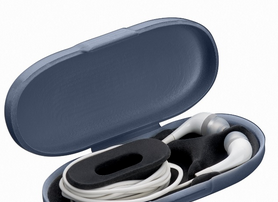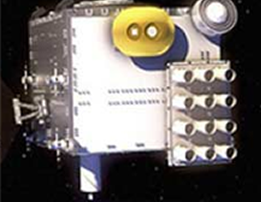Stratasys Material News
Endur – Now Available in 20 Different Digital Materials! Info from Stratasys February newsletter Endur (RGD450), the advanced PolyJet material for simulating Polypropylene is now available in 20 Digital Material combinations. Endur can now be blended with TangoBlackPlus and TangoPlus rubber-like material to produce 8 new Digital Materials which provide impressive impact strength for tough prototypes and12 new flexible Digital Materials with a range of Shore A values. The Endur material, renowned for its durability and beautiful surface finish, is ideal for creating tough prototypes for snap-fit components, living hinges and other demanding applications. With the new Digital Material options you can now create: Tough prototypes with thin walls and living hinges for consumer goods and electronics product design, Prototypes that mimic polypropylene and over- molding in the same build, Tough, durable and aesthetic prototypes in a range of gray shades and differing flexibly. Earphone case featuring snap-fit lid and rubber-like over-molding. 3D Printed as a single piece using PolyJet Endur and TangoBlackPlus Digital Material combinations. Outer shell – RGD 4830; Inner rubber overmolding – FLX4870 shore70; Stratasys logo on lid – FLX4895 shore 95 ASA Takes FDM Thermoplastic to New Heights Designed for use in multiple industries, Stratasys’ new FDM ASA [...]
Stratasys 3D Printing Keeps NASA Satellite On Time and On Budget – FDM Strong Enough for Space
Reposted from Stratasys Blog We're pleased to announce a new frontier in aerospace 3D printing. Stratasys Direct Manufacturing has partnered with NASA’s Jet Propulsion Laboratory (JPL) to 3D print 30 antenna array supports for the FORMOSAT-7 Constellation Observing System for Meteorology, Ionosphere, and Climate (COSMIC-2) satellite mission. Scheduled for launch in 2016, the COSMIC-2 mission marks the first time 3D printed parts will function externally in outer space. The antenna arrays will capture atmospheric and ionospheric data to help improve weather prediction models and advance meteorological research on Earth. In order to keep the project on time and on budget, NASA needed an alternative to machining the parts out of astroquartz, the material traditionally used for antenna arrays. They turned to Stratasys Direct Manufacturing to produce 3D printed parts that could handle the complex array designs and also be strong enough to withstand the environmental demands of outer space. Stratasys Direct Manufacturing built the custom-designed parts using FDM-based Fortus 900mc 3D Production Systems from Stratasys. FDM was the only additive manufacturing process able to meet the project’s strength and load requirements. NASA chose durable ULTEM 9085 material, a thermoplastic that has similar strength to metals like aluminum but weighs much less. “Using FDM [...]
Stronger, More Colorful Prototypes, End Use Parts with New 3D Printing Materials
Reposted from Stratasys Blog 29 Jan. 2015 by Laurie Carr Color ASA Thermoplastics allow you to bypass further painting or finishing steps, saving time and money Endur Digital Materials are ideal for challenging geometries and repetitive testing – produce durable prototypes with thin walls, living hinges, snap-fits and moving or assembled parts Stratasys’ tenacious new 3D printing materials allow you to produce more durable prototypes for repetitive testing and tough, color-matched assembly tools as well as end use parts more efficiently and cost-effectively than traditional manufacturing technologies. Think in Color with FDM’s ASA Thermoplastic Technology The increase in demand for robust applications with UV-resistant capabilities has quickly established ASA as a popular all-purpose material in additive manufacturing. Stratasys is bringingeight new colors to the ASA product line: red, orange, yellow, green, dark blue, white, dark gray, and light gray. Applications ranging from tooling and sporting goods to consumer products and automotive end-use parts stand to benefit from the new vibrant color ASA materials. Engineers and manufacturers now have the ability to create end-use parts, functional prototypes, and jigs and fixtures in a variety of rich colors with strong, durable mechanical properties. Whether a manufacturer is measuring the effectiveness of color characteristics in a [...]
Take Advantage of Spindle Probes
Take Advantage of Spindle Probes Reposted from Mastercam Blog, December 5, 2014 by rah Most new CNC machines purchased today are equipped with spindle probes but few of these are being used effectively, if at all. Some manufacturers are reluctant to use spindle probes because they believe that expensive CNC equipment should not be used for measuring parts. The reality is that when parts have to be brought to a CMM for in-process inspection, far more valuable time is expended transporting the part, waiting for the inspection, transporting the part back to the machine and setting it up again. Probing during setup allows for a faster and more accurate orientation of the part with more precise tool offsets. During manufacturing, spindle probe data delivered directly to the inspection software may be used to generate reports just as if the part had been measured on a CMM. Until recently, programmers had to insert manually generated macros at appropriate intervals to incorporate probing into CNC programs. Now the Productivity Plus probing module in the latest version of Mastercam allow the programmers to create these probing functions from within Mastercam. Learning how to use this capability can improve quality with more immediate in-process gaging feedback, reduce [...]
Stratasys Scores with 3D Printed Football!
Re-posted from Stratasys Blog 27 Jan. 2015 by Stephen Burg Stratasys 3D printing and sports have often teamed up with winning results. Kite surfing, snowboarding, skiing, motors sports, fencing - all had their competitive edge sharpened with 3D printing. We even worked with the University of Texas at Dallas to help them improve their sports concussion testing protocol. But this is the first time that we at Stratasys have 3D printed an actual football. It might even be a world first! Produced on the Objet500 Connex3 Color Multi-Material 3D Production System, the Stratasys ball is 3D printed in three materials: Rubber-like (TangoPlus), Rigid Magenta (VeroMagenta), and Rigid Yellow (VeroYellow) in one 3D print job. In order to give the football that authentic feel, we incorporated the texture of a composite football into the design with raised material. It weighs about the same as the weighted warmup balls favored by quarterbacks. Of course, when you 3D print a football you have to go out and test it. Check out the video to see the final score.
Customer Applications: Jigs & Fixtures…3D Print them!
This first 2015 edition of 2 Minute Tuesday's for Stratasys is all about using 3D Printing to create Jigs& Fixtures. http://youtu.be/Yx1jeuMbzeM




